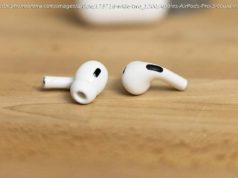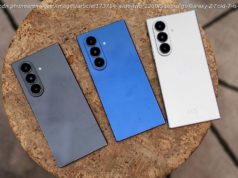With a power-sipping Qualcomm Snapdragon 850 processor, the Samsung Galaxy Book2 Windows tablet promises excellent battery life and LTE connectivity.
As a Windows tablet with built-in gigabit LTE and 20-hour battery life, the Samsung Galaxy Book2 has a lot of potential for tablet shoppers looking for a more capable alternative to the Apple iPad. Theoretically, the $999.99 Galaxy Book2 combines the best of the large-screen Apple iPad Pro (long battery life, instant startup, vivid touch screen, pen support) with the power of Windows 10 (the ability to use a mouse and run desktop software). Add in a gigabit LTE modem, and it becomes even more intriguing. The big unknown, however, is whether the Book2’s Qualcomm Snapdragon 850 processor will be powerful enough to offer a computing experience that isn’t marred by sluggishness and incompatible apps. We got a quick first look and have some impressions.
Samsung gave PCMag an early look at the Book2, which goes on sale Nov. 2. As soon as I picked it up, I noticed that the tabet’s physical design shares far more with the Microsoft Surface Pro than it does with the Apple iPad Pro. That’s because it features a built-in kickstand for propping the tablet up on your desk, and it also comes with a keyboard cover in the box. Attach the keyboard cover—complete with miniature touchpad—to the tablet using the magnetized POGO-style connector, and you get a credible substitute for a laptop.
Microsoft pioneered this setup with the Surface Pro, and other companies like Dell, HP, and Lenovo later refined it with devices like the Lenovo IdeaPad Miix 520. In the Galaxy Book2’s case, the entire package feels more like a thick coffee-table book than a laptop. The 12-inch screen is slightly smaller than the iPad Pro’s 12.9 inches and the Surface Pro’s 12.3 inches, but it’s a negligible difference when you’re holding it. Case in point: Without the keyboard cover, the Galaxy Book2 weighs 1.75 pounds and measures 0.3 by 11.32 by 7.89 pounds (HWD), while the Surface Pro 6 measures 0.33 by 11.5 by 7.9 inches (HWD) and weighs 1.7 pounds. You’d be hard-pressed to give either the edge.
The keys feel very solid and travel a satisfying distance when you press them, but the keyboard cover itself is quite bendy, which results in a significant amount of flex if you type forcefully. I do appreciate the textured back of the keyboard cover, but by far the best thing I can say about it is that it is included at no extra charge, unlike the Surface Type Cover, which must be purchased separately from the Surface Pro.
The Galaxy Book2’s S Pen stylus (which is also included in the $1,000 base price, unlike the optional $99 Surface Pen) is pleasing to use, with excellent pressure sensitivity and palm rejection. I appreciate that Samsung includes a spare pen tip, as well as a tool for swapping out the tips, which will dull over time like a pencil tip does.
The major downside of the S Pen is that it has a weak magnet. It sticks to the tablet’s left edge, but it takes some effort to get it to stay, and each time I picked up the tablet, the pen fell off. Microsoft has struggled with the problem as well, including a pocket clip in early versions of the Surface Pen, until it finally added stronger magnets to the 2017 Surface Pro 5.
I’m not a fan of the Galaxy Book2’s drab grey color scheme, but at least it’s consistent, with the S Pen, the keyboard cover, and the rear of the tablet all sporting nearly the same shade of gray. The bezel, or border around the screen, is jet black and rather wide, especially compared with the vanishingly thin bezels that now grace the latest ultraportable laptops, such as the Dell XPS 13.
If you’re in the market for a Windows tablet, chances are you’re looking for more connectivity options than an iPad or an Amazon Fire tablet can provide. The Galaxy Book2 has you partially covered, with two USB Type-C ports, a headphone jack, and an SD card slot built into the SIM-card tray. To insert an SD card, you have to pop out the tray using the included SIM tool. It’s unfortunate that there’s no USB Type-A port, which you can find on the IdeaPad Miix 520.
Mixed in with the ports are two speakers, one each on the left and right edges. They appear to offer better-than-average sound for a tablet, based on streaming a music video from YouTube for a few seconds. I’ll offer a more extensive evaluation of the audio quality in my full review of the machine, but for now, suffice it to say that the fact that AKG tuned the 2-watt speakers appears to be a noticeable perk rather than a gimmick.
The 8-megapixel main camera offers very good image quality as far as laptop or tablet webcams go, with almost no graininess present in still images taken indoors in low light. There’s also a front-facing 5-megapixel camera for Skype sessions.
The Galaxy Book2’s 4GB of memory and 128GB of storage are rather stingy for a $1,000 machine. On the plus side, you almost certainly won’t be doing heavy multitasking or other memory-intensive activities, or installing massive game files on this tablet.
The Galaxy Book2’s real potential as a game-changing Windows tablet lies in Samsung’s battery-life and computing-performance claims, and we’re hard at work putting those to the test in PC Labs. Evaluating the performance of the Snapdragon 850-powered Book2 isn’t like testing ordinary Intel- or AMD-powered laptops or desktops, because the CPU uses an entirely different instruction set. That means some of PCMag’s benchmark apps aren’t compatible, and despite efforts from Microsoft to get app makers on board, some of your favorite apps might not be either.
The good news is that the Windows-on-Snapdragon situation appears to have improved immensely since the first machines appeared earlier this year. Plagued by a slower processor (the Snapdragon 835) and an earlier version of Windows 10, the Asus NovaGo was so sluggish that it was virtually unusable when I first tested it.
But that’s not the case at all with the Galaxy Book2. Thanks to both hardware and software improvements, the few hours I’ve spent using it so far have been entirely stutter-free. That applies not only to Microsoft apps like the Edge web browser and the Sticky Notes app, but also third-party apps like the Opera browser, Samsung’s note-taking app, and the pre-installed Verizon app that lets you manage your data connection. Note that the Book2 ships with Windows 10 S Mode enabled by default, and you’ll need to upgrade to the full version of Windows to install apps that aren’t available in the Microsoft Store.
Although I haven’t extensively tested the wireless connection, one thing I do know: Thanks in part to Verizon’s reliable network and in part to the Snapdragon X20 LTE modem, the Galaxy Book2 can take advantage of seriously fast mobile data speeds.






